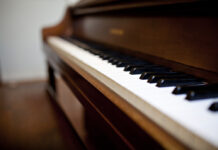Is it only the drum kit that a drummer has to carry? No, there’s much more to that. We’re not talking wallets, smartphones, or credit cards. There are accessories beyond the drum kit that a drummer needs, and these are quite necessary — some for daily use, some in case of trouble. And I don’t mean some specific drums or cymbals (click here to read more on these). It’s all about what else a drummer needs.
I will focus on items a drummer may need during gigs or rehearsals. Find some space for these in your enormous bags; this should not be much of a problem.
Metronome
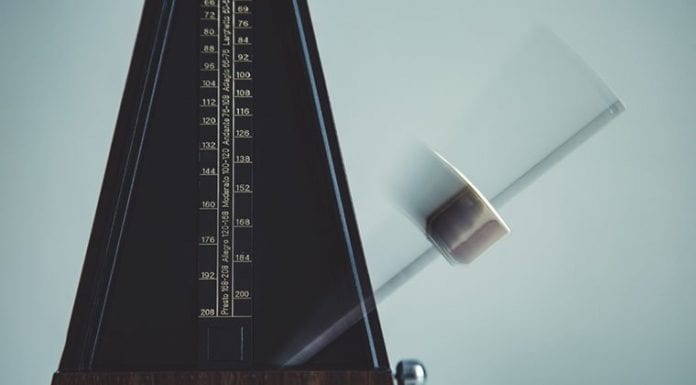
This tool is a must to set the BPM. Having its sound in your ear means you always have the tempo reference. A modern electronic metronome can be set to change the tempo at a certain moment — say, switch from 80 to 120 BPM when the song requires that. You can also do it manually in real-time when necessary.
There are metronome apps for smartphones, like one by Soundbrenner. For serious gigs, though, I still recommend a hardware one. If for some reason you stick with an app, though, I insist you should use wired phones (or audio output) instead of wireless. This will minimize the delay down to zero; otherwise a metronome makes no sense.
A metronome is a great tool for rehearsals, sessions, or any unofficial gigs. On serious gigs, of course, you need to be more confident than that. Of course, the metronome should only be heard by you when used. And never should you lose the sound of it. That’s why you will definitely also need…
Headphones
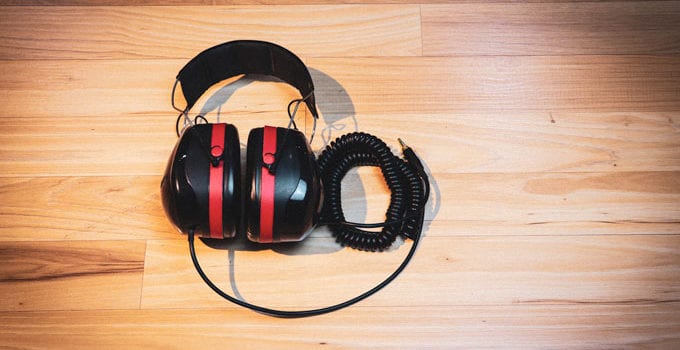
A drummer’s headphones are the tool for staying in touch with the reference beat and other musicians. They should be easy to wear and not easily seen. In-ear models are the best. Sitting deep enough, they provide loud and clear bass.
Of course, not all in-ear monitors are created equal. Some of them (by Shure, Mackie, Bose, or Sennheiser) are better suited for using with the drum kit. The quality is above all: they make the drummer more than just a musician, but the media between the perfect reference beat and the rest of the band. Last but not least: in-ear monitors are compatible with protective earmuffs (and are completely hidden by them).
Of course, your in-ear monitors (or headphones for short) should be wired. Wireless technologies mostly provide too much delay which is unaffordable.
Tuning Key Adapter
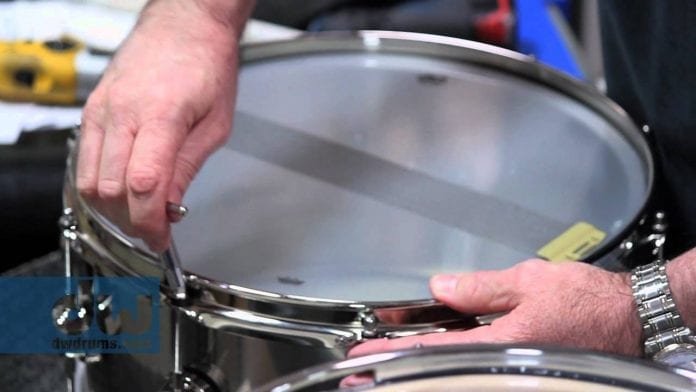
Who said drums don’t need tuning? There are notes for drums as well, though they are not so obvious. Drum tuning is an art one has to master to make them sound right, and a key adapter is a tool for it. It does not take much place, but it’s necessary for tuning drums or replacing drum heads if damaged.
A good key requires no other tools to tune your drums. Neither does it require much space. Still it’s worth highlighting as a tool you better take with you.
Bass Drum Microphone
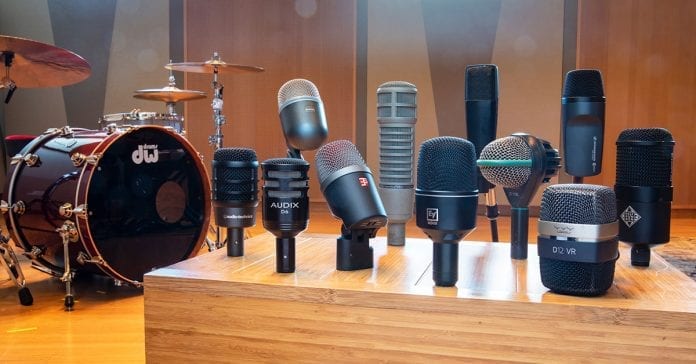
While the bass drum is the most powerful of them all, sometimes its acoustic force is not enough. On smaller stages, you won’t have to use mics for all the drums in your setup. But the bass drum needs a microphone to be amplified and broadcast to the public electrically.
A good microphone for a bass drum should not be very expensive or dub a vocal microphone. But it should be especially fit for its mission. Usually, it’s a cardioid or semi-cardioid mic, with a low tripod, its frequency range starting as low as 30 or even 20 Hz, and response being optimized for kick drums and other low-frequency instruments.
It can be also of great use if you want to make a live record; then, though, you will need more than one mic. There are never too many of them. Each mic requires a cable and a stand, and a multi-input audio interface to connect to. But if you only can afford one mic, stick for the kick drum.
Stick Holder
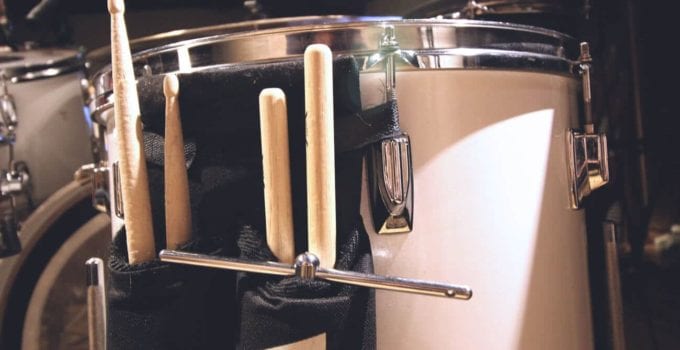
Sticks are the tools the drummer holds most of the time. But you might need more than one pair. I’m not speaking about replacing broken sticks: various songs, or even various parts of the same track, may require different sticks to provide a softer or a harsher sound manner.
It’s great to have your spare or changeable sticks just one touch away, and that’s where a holder helps. Mount it on your hi-hat stand or that of a tom, so you can easily grab a stick if you break one or two, or switch to another pair to change your manner.
How many sticks should a good holder hold? They usually recommend up to four pairs. You can have three different pairs to change for different manners, and some extras in case you break one. Chances you break a stick are higher as you play something expressive, so make your choice according to that.
Unlisted (But Still Great)
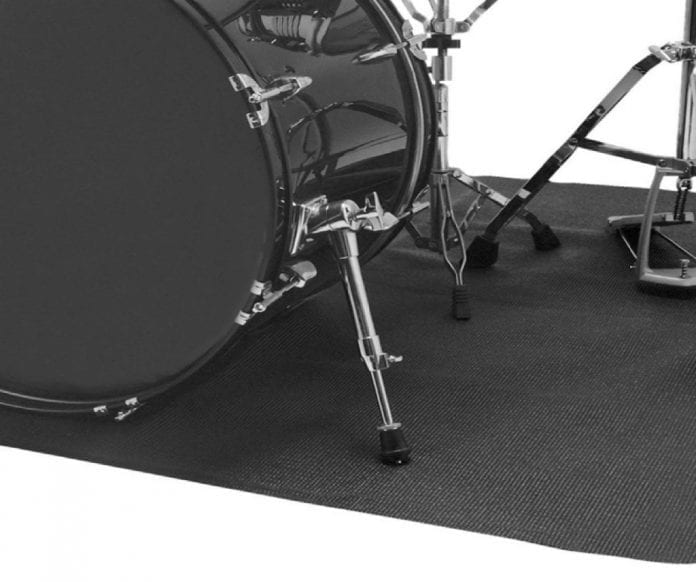
There are other tools that are not that necessary but may turn out useful. For example, a rug on the floor that prevents slipping, or earmuffs. The former is not necessary (though sometimes it can save your kit from slipping away), the latter can be combined with a good pair of in-ears if you use them (but here opinions differ).
I left unmentioned optional parts of a drum kit, like spare sticks or drumheads, dumpers, hi-hat clutches, quick release cymbal locks, double bass drum pedal, or a throne – not because I consider them unimportant, but because for me these are parts of the drum kit itself. Some, though, may address them as accessories. In fact, these deserve a separate review.
As for practice pads and other accessories to maintain your skill, these are great to have at home, to practice almost silently. The same concerns electronic drums if you are not using them for live gigs, but just to record MIDI tracks. Great as they might be for playing and keeping in shape, these are of quite another sort.
The most thought-out accessory I have seen in my life, though, was a drink holder. It always gets hot at a good gig, so you’ll need a drink every once in a while. What its makers didn’t think of, though, is that one drink is rarely enough.
Your Own Must-Haves
And what do you think is necessary for a drummer? Which items do you always carry, and what would you like to have? How do you use the accessories you have? Is there anything more important to you? Leave your comments here to discuss, or share this on Facebook and Twitter to speak about it with your friends and subscribers.


